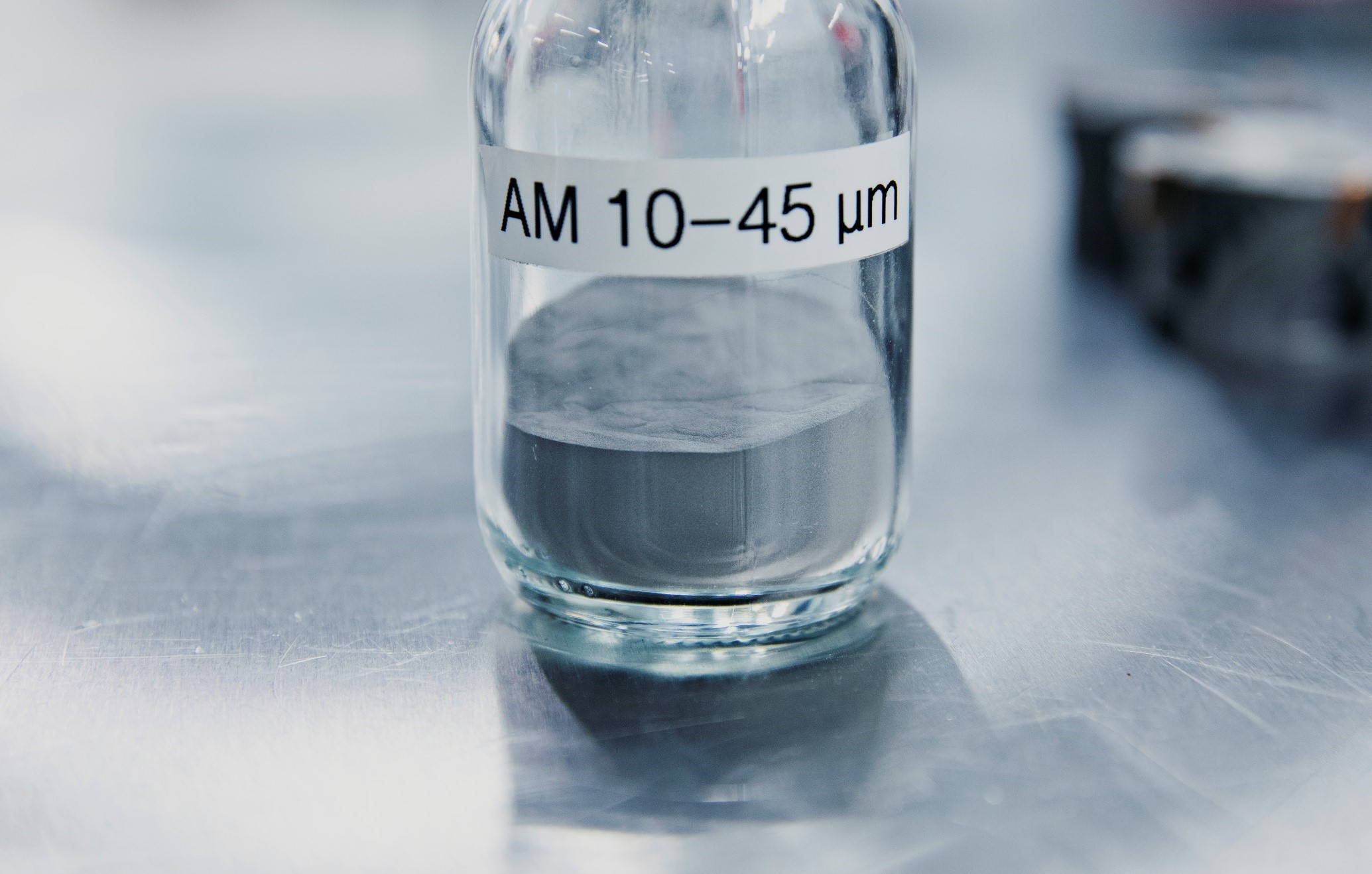GE Additive has announced a “strategic partnership” with the global engineering group Sandvik as part of its Binder Jet Beta Partner Program.
The agreement will see Sandvik supply GE Additive with its Osprey brand of metal 3D printing powders for its upcoming H2 Binder Jetting system. In return, Sandvik will now be able to leverage GE Additive’s H2 machine as a means of fabricating parts for its internal and external customers.
Sandvik joins existing partners Wabtec and Cummins on GE Additive’s Binder Jet Beta Program alongside GE subsidiary and metal powder provider AP&C, which also supplies alloys for the H2 system.
“Our approach to Binder Jet is making additive mass production a reality in every industry,” said Jacob Brunsberg, Binder Jet product line leader at GE Additive. “While it would be easier [for us] to launch individual machines, we continue to hear from customers, especially in the automotive industry, that they need a complete solution that can scale.”
“The materials collaboration with GE Additive offers great opportunities to qualify our wide range of Osprey metal powders for their new Binder Jet platform.”
GE Additive and Sandvik’s H2 binder jet journey
GE Additive’s Binder Jet Beta Partner Program is designed to scale its 3D printing technology by allowing companies such as Wabtec and Cummins to trial the machines in short production runs. During the first phase of the project, GE will produce a small number of the H2 binder jet systems as prototypes for its partners before making them commercially available as a factory solution in 2021.
Sandvik has now agreed to become part of the Beta Partner Program and provide its expertise in 3D printing materials and post-processing methods such as metal cutting, sintering, and heat treatment. As part of the deal, Sandvik is also set to work closely with GE Additive to become one of its certified powder suppliers, adding Sandvik’s Osprey materials to the H2 system’s compatible portfolio.
As an added benefit, GE Additive’s customers will now be able to benefit from an ever-growing range of Osprey metal powders. Sandvik is currently developing various steels, nickel-based superalloys, cemented carbides, and high-entropy alloys to add to its product lineup. What’s more, the company has opened a new plant in Sweden, which will increase its nickel and titanium output and make it an increasingly capable partner.
“Sandvik is a leading expert in gas-atomized additive manufacturing powders,” said Kristian Egeberg, President of Sandvik Additive Manufacturing. “The materials collaboration with GE Additive offers great opportunities to qualify our wide range of Osprey metal powders for their new Binder Jet platform, to enhance end-customer productivity and product performance.”

GE Additive’s Binder Jet 3D printing technology
GE Additive’s H2 system is the follow-up to its H1 Binder Jet 3D printer, which was first teased by the company in 2017. The H1 machine was designed to remove the need for castings, expensive tooling, molds or infrastructure, and enable new additive applications in the aerospace and automotive industries.
Whereas the initial prototype could print large parts using a range of alloys, including steel, nickel, and iron alloys, the H2 Binder Jet system is currently only compatible with stainless steel 316. Given that the machine’s not in full production yet, this is hardly surprising, and GE is reportedly working on making numerous low-carbon steels compatible with the system.
Global rail and transit manufacturer Wabtec became one of the first customers to use GE Additive’s H2 Binder Jet system to fabricate metal components in May 2019. Leveraging its new system, Wabtec created spare parts on-demand, reducing customers’ inventory requirements while supplying them with reduced lead times.
American engine manufacturer Cummins Inc. also invested in a Beta H2 machine last year, which it used to remanufacture parts and engines under the brand name ReCon. Tim Millwood, Cummins’ Vice President of Global Manufacturing, claimed at the time that the new technology could reduce lead times while being eco-friendly and cost-effective too.

Recent advances in binder jet 3D printing
Binder jet 3D printing has undergone significant advances since it was first introduced in the nineties, and numerous companies have launched variants of the technology in recent years.
A team from Fraunhofer Institute for Ceramic Technologies and Systems (IKTS) has developed a Multi-Material Jetting (MMJ) system to combine various materials into a single printed part. The new machine can incorporate performance materials such as ceramics and metals into one product while maintaining their individual qualities.
Elsewhere, Massachusetts-based 3D printer manufacturer Desktop Metal unveiled what was reportedly the world’s first metal binder jetting system at Formnext 2019. The company’s Shop System, which consists of a 3D printer, powder station, and furnace, is designed to integrate into existing CNC shop operations.
ExOne is an established producer of binder jetting systems, and it launched its X1 25 PRO machine at Formnext 2018. The X1 25 PRO metal 3D printer has been optimized to focus on Metal Injection Molding (MIM), powder metallurgy, and mechanical engineering market applications.
Check us out on Twitter and Facebook for more updates! Don’t forget to subscribe to the 3D Printing Industry newsletter to keep up-to-date with the latest 3D printing news.
Are you looking for a job in the additive manufacturing industry? Visit 3D Printing Jobs for a selection of roles in the additive manufacturing industry.
Feature image shows a titanium powder tower. Photo via Sandvik.


